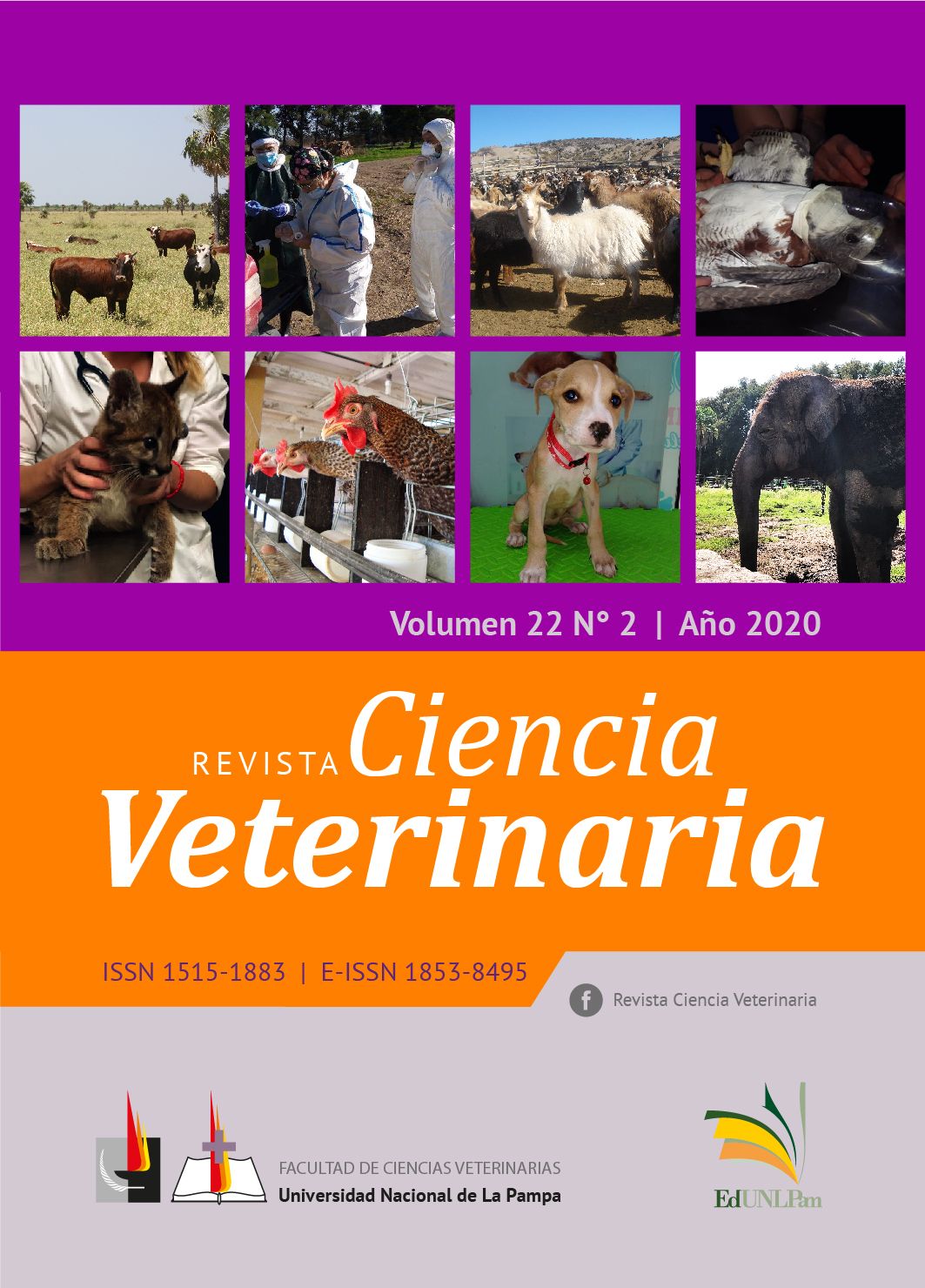Fattening steers in confinement: Evaluation of productive performance through simulation of feeding strategies
DOI:
https://doi.org/10.19137/cienvet-202022204Keywords:
Live Weight, Scenario Assessment, Growth Function, ConsumptionAbstract
A simulation model was designed in order to serve as a management tool to estimate the rate of change in live weight in confined steers. The main components of the production system integrated in the model were the animal, the environment and the diet. The quantified biological interrelationships are summarized in the voluntary consumption of dry matter and nutritional balances of metabolizable energy and digestible protein. The potential consumption estimated by the physiological maturity dependent on the zebu, bullfighting or hybrid animal biotype, sex and age was corrected by indexes related to the size of the food particle and actual digestibility of the diet. This was estimated through the development and validation of indexes and correction functions considering the level of tannins, silica, crude protein and non-structural carbohydrates together with the particle size taken from data tables of the Cornell model. The confidence of the model to predict the increase rate in live weight was evaluated by means of the t student test with experimental data from 12 batches of steers of breeds of early physiological maturity, during 119 days. The daily gains of average weights of the model presented a similar trend to the observed data (P: 0.65). In addition, the regression analysis between simulated and observed variables presented a similar trend both for estimating consumption (R2 = 0.62) and for estimating daily weight gain (R2 = 0.58). The model allows evaluating process innovations to determine production functions related to live weight in different scenarios incorporating variables such as bovine biotype, modified diet quality based on its digestibility, particle size, and environmental temperature.
Downloads
References
SENACSA 2017 Estadísticas pecuaria. Consultado en línea en http://www.senacsa.
gov.py/v8/pdf/estadistica_pecuaria/2017/anuario-2017-1.pdf
Ocampos Olmedo DA, Lopes J, barcellos OJ, de Oliveira TE. Desenvolvimento de un
modelo preditor do desempenho de novillos de corte suplementados em pastagens
tropicais. Revista Brasilera de Zootecnia.2010; 39(2): 402-410.
Allende R, Aguilar C, García F.. Modelo de simulación para estimar la ganancia de peso en novillos en praderas naturales de la IX región de Chile. Proceedings de la XVI Reunión Latinoamericana de Producción Animal. III Congreso Uruguayo de Producción
Animal.2000.
Vera R, Morales JS. Decision support systems for pasture utilization: Developments,
opportunities and constrains. In Simposio Internacional en producción Animal y Medio Ambiente. Proceedings XXVI Reunión anual de la Sociedad Chilena de Producción Animal.2001.
CSIRO. Nutrient Requirements of Domesticated Ruminants. CSIRO Publishing, Collingwood. 2007. pp 209-213.
NRC. Nutrients requirements of beef cattle. Eight revised edition. National Academy
Press. Washington, D.C 2006.
Giger-Reverdin S, Aufrere J, Sauvant D, Demarquilly C, Vermorel M.Prediction of energy values of compound feeds for ruminants. Anim. Feed Sci. Technol. 1994;48: 73-98.
Vierira RAM, Tedeschi LO, Cannas A. A generalized model for describing fiber dynamics in the ruminant gastrointestinal tract. The heterogeneity of the pool of fiber
particles in the ruminoreticulum. 2007 Beef Cattle Report in Texas. Texas A&M University, College Station, TX.2007. pp. 97-102 .
Van Soest PJ.Nutritional ecology of the ruminant. 2nd Edition, Cornell University
Press, Ithaca.1994. pp. 476.
ARC. The nutrient requirements of ruminant livestock. London, Commonwalth Agricultural Bureaux, Farnham Royal, Slough, Gresham Press.1984.
Australian meat research comite review. The requirements Nitrogen for ruminal microbial. 1996. [Internet] consultado: Mayo 2019. Disponible en: http://www.austehc.
unimelb.edu.au/asaw/biogs/A000409b.htm
Nocek JE, Tamminga S. Sites of digestion of starch in the gastrointestinal tract of dairy cows and its effects on milk yield and composition. J. Dairy Sci.1991; 74: 3-598-3629.
Stokes SR, Hoover WH, Miller TK, Manski. Impact of Carbohydrate and protein levels on bacterial metabolism in continuous culture. J. Dairy Sci. 1991; 74: 860-870.
Mertens DR. Predicting intake and digestibility using mathematical models of ruminal function. J. Anim. Sci.1987; 64:1548-1558.
AFRC. Nutrients energy and protein requirements for ruminants. CAB International,
United Kingdom. 1993.
Garcia F. Requerimientos de proteína en ganado lechero. En: Simulación de Sistemas Pecuarios. Ruiz, M.E. Editor RISPAL.1992. pp 189 - 283.
Orskov E. Nutrición proteica de los rumiantes. Editorial Acribia. Zaragoza. España.
Pp. 177.
Aguilar C, Cortés H, Allende R. Los modelos de simulación. Una herramienta de apoyo a la gestión pecuaria. Archivos Latinoamericanos de Producción Animal.2002; 10 (3) 226-231.
SAS. Statistical Analysis Systems User’s Guide. Version 2002. SAS Institute, Cary, NC.
Downloads
Published
How to Cite
Issue
Section
License
Al momento de enviar sus contribuciones, los colaboradores deberán declarar , de manera fehaciente, que poseen el permiso del archivo o repositorio donde se obtuvieron los documentos que se anexan al trabajo, cualquiera sea su formato (manuscritos inéditos, imágenes, archivos audiovisuales, etc.), permiso que los autoriza a publicarlos y reproducirlos, liberando a la revista y sus editores de toda responsabilidad o reclamo de terceros , los autores deben adherir a la licencia Creative Commons denominada “Atribución - No Comercial CC BY-NC-SA”, mediante la cual el autor permite copiar, reproducir, distribuir, comunicar públicamente la obra y generar obras derivadas, siempre y cuando se cite y reconozca al autor original. No se permite, sin embargo, utilizar la obra con fines comerciales.







4.png)


7.png)



